Describe How the Octet Rule Applies to Covalent Bonds.
The Octet Rule requires all atoms in a molecule to have 8 valence electrons--either by sharing losing or gaining electrons--to become stable. First lets define the octet rule and then defined Covalin bonds and see if we can describe how the octet rule applies to Covalin bonds.

The Covalent Bond Pages Learning Objectives Apply The Octet Rule To Atoms That Form Covalent Bonds Describe The Formation Of Single Double Ppt Download
Explain the formation of single double and triple bonds.
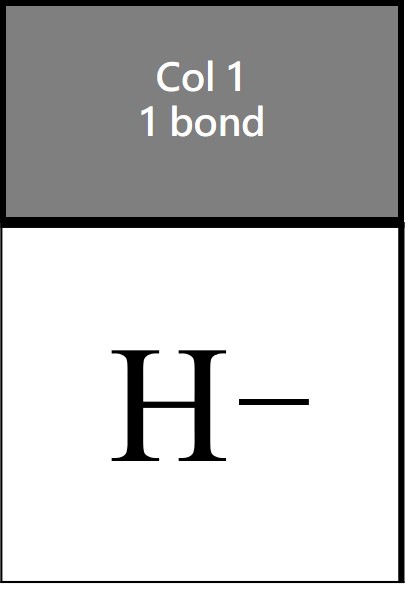
. Describe how cations and anions form. Atoms have two ways to achieve an octet. Describe ionic lattice structure.
Distinguish between melting points and boiling points of molecular and ionic compounds. How is this different from how it applies to ionicu bonds. You will see that there are many ways that covalent bonds can be formed depending on the compound and electron configuration.
Draw Lewis dot structures. Ionic and Covalent Bonds. Oxygen and other atoms in group 6A 16 obtain an octet by forming two covalent bonds.
52 Select all that apply. Describe how the octet rule applies to covalent bonds. Which of the following statements correctly describe the normal bonding pattern for a neutral atom of each element assuming that the octet rule is obeyed.
To obtain an octet these atoms form three covalent bonds as in NH 3 ammonia. So in the case of a Covalin bond where electrons are shared that being the. Ionic Bonds are when electrons are exchanged to satisfy the octet of each element reacting.
- 8711915 Jewelzxc Jewelzxc 19122020 Science Senior High School answered how does the octet rule apply to covalent bonds. Covalent Bonds are when two atoms SHARE their electrons to satisfy the octet rule. Covalent Bonding Learning Objectives To describe how a covalent bond forms.
Describe how the octet rule applies to covalent bonds. Identify anions and cations. Also to the describe tionic lattice structure and explain the formation of single double and triple bonds.
Covalent compounds are not soluble in water. Illustrate the formation of single double and triple covalent bonds using Lewis structures. Draw Lewis dot structures In the second part of the Ionic and Covalent Bonds simulation you will learn about the octet rule and how to apply this to building Lewis dot structures in a virtual drawing activity.
Describe the formation of ionic and covalent bonds. How is a covalent bond formed between two atoms. IONIC BONDS Atoms in Groups 1 to 3 lose their electrons when they react.
What is electron sharing. The octet rule is a rule in chemistry where elements want to form bonds to attain 8 electrons in their valence shell. Bonds identify anions and cations and apply the octet rule.
Describe how the octet rule applies to covalent bonds. They can either lose electrons or gain electrons. Fforms a single covalent bond.
Write the corresponding number of the phrases that describe some commonexamples of. Problem 70 Describe a polar molecule. To apply the octet rule to covalent compounds.
Compounds with covalent bonds usually have lower enthalpies of vaporization and fusion. Describe how the octet rule applies to covalent bonds atoms shares valence electrons the shared electrons complete the octet of each atom Name the diatomic molecules. For Covalent bonds atoms tend to share their electrons with each other to satisfy the Octet RulePhosphorus needs to gain 3 electrons to fulfill the Octet Rule.
31 Ionic bonding a describe ionic bonding as in sodium chloride magnesium oxide and calcium fluoride including the use of dot-and-cross diagrams 32 Covalent bonding and co-ordinate dative covalent bonding including shapes of simple molecules a describe including the use of dot-and-cross diagrams. The shared electrons complete the octet of each atom. The octet rule causes atoms to form bonds in such a way that they acquire eight valence electrons.
The octet rule states that Adams tend to gain lose or share electrons in order to achieve a full set of eight valence electrons when they form bombs. Compounds formed by covalent bonding dont conduct electricity due to the lack of free electrons. Atoms share valence electrons.
In this overview of chemical bonds learn about ionic compounds covalent bonds the octet rule Lewis structures and more. Apply the octet rule. Describe properties of ionic compounds 7.
The majority of covalent bonds form between nonmetallic elements. Record three observations from the simulation. Explain the electrical charge of an ionic compound.
H forms one covalent bond and is generally not found as a central atom in covalent species. Up to 24 cash back covalent bonds. An example of this would be sodium chloride.
Problem 9 Illustrate the formation of single double and triple covalent bonds using Lewis structures. Check all that apply. Distinguish between ionic compounds and covalent compounds.
The shared electrons complete the octet of each atom. Describe a polar covalent bond. How is this different from how it applies to ionicu bonds.
Describe how a covalent bond forms. Atoms share valence electrons. You can use these brief lessons and quizzes for completing a.
Apply the octet rule to covalent compounds. Fluorine and the other halogens in group 7A 17 have seven valence electrons and can obtain an octet by forming one covalent bond. Illustrate the formation of single double and triple covalent bonds using Lewis structures.
This gives them charges of 1 2 and 3. Except for noble gases all atoms have fewer than eight electrons in their valence shell. Describe how electrons are shared to form covalent bonds and identify exceptions to the octet rule.
Furthermore to distinguish between ionic compounds and covalent compounds. The majority of covalent bonds form between nonmetallic elements.

Environmental Science What Is Covalent Bonding Dummies
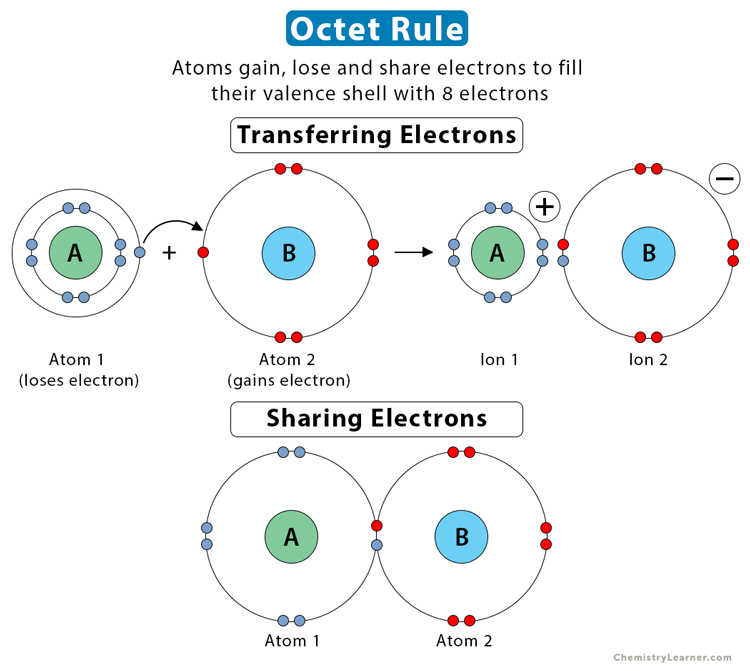
Octet Rule Definition And Examples
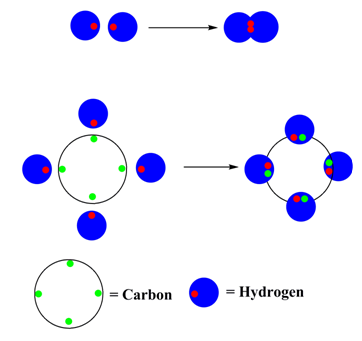
8 1 Chemical Bonds Lewis Symbols And The Octet Rule Chemistry Libretexts

Lesson Explainer Covalent Bonding Nagwa
Chemistry Chapter 8 Covalent Bonding Ppt Download
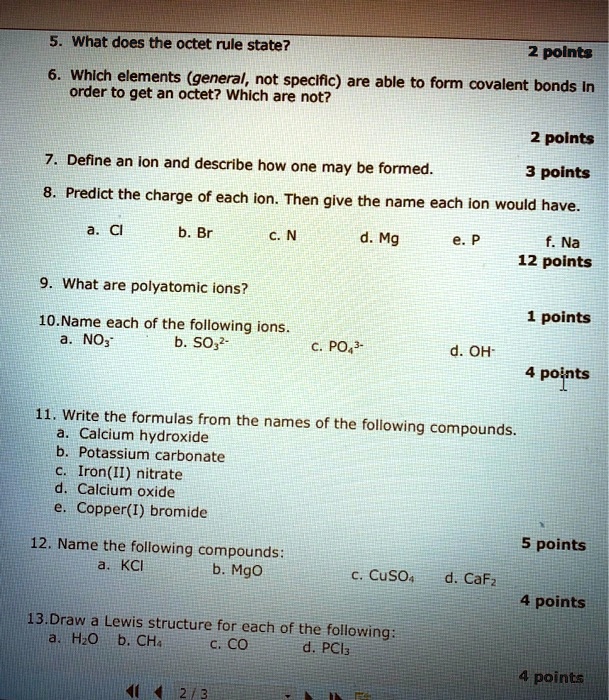
Solved What Does The Octet Rule State 2 Polnts Which Elements General Not Specific Are Able To Form Covalent Bonds In Order To Get An Octet Which Are Not 2 Polnts Define An

1 3 Ionic And Covalent Bonds Chemistry Libretexts

Goals 1 What Is A Covalent Bond Be Able To Describe The Nature Of Covalent Bonds And How They Are Formed 2 How Does The Octet Rule Apply To Covalent Ppt Download

Octet Rule And Its Extension For Common Covalent Compounds And Ionic Download Scientific Diagram

The Octet Rule Help Definition And Exceptions Youtube

Octet Rule Song Octet Rule Covalent Bonding Electron Configuration
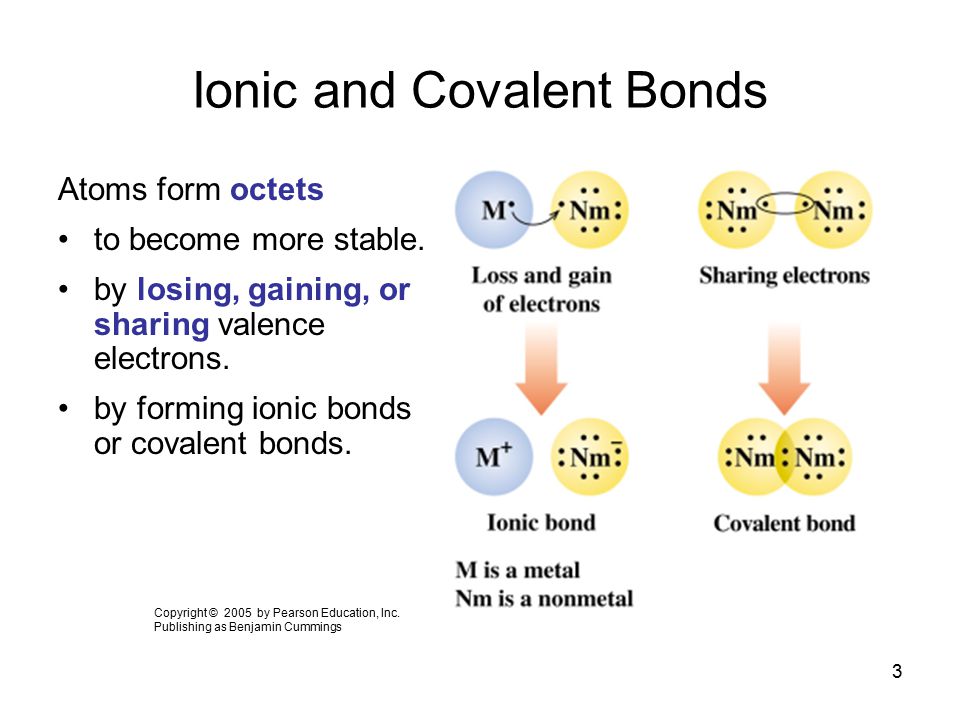
Chapter 4 Octet Rule And Ions Ppt Video Online Download
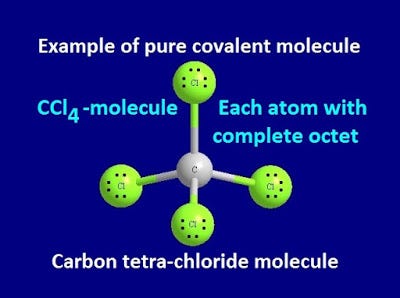
Octet Rule Definition Limitations Of Octet Rule Hypovalent Hypervalent Compounds By Kakali Ghosh Teacher Blogger M Sc Chemistry Medium
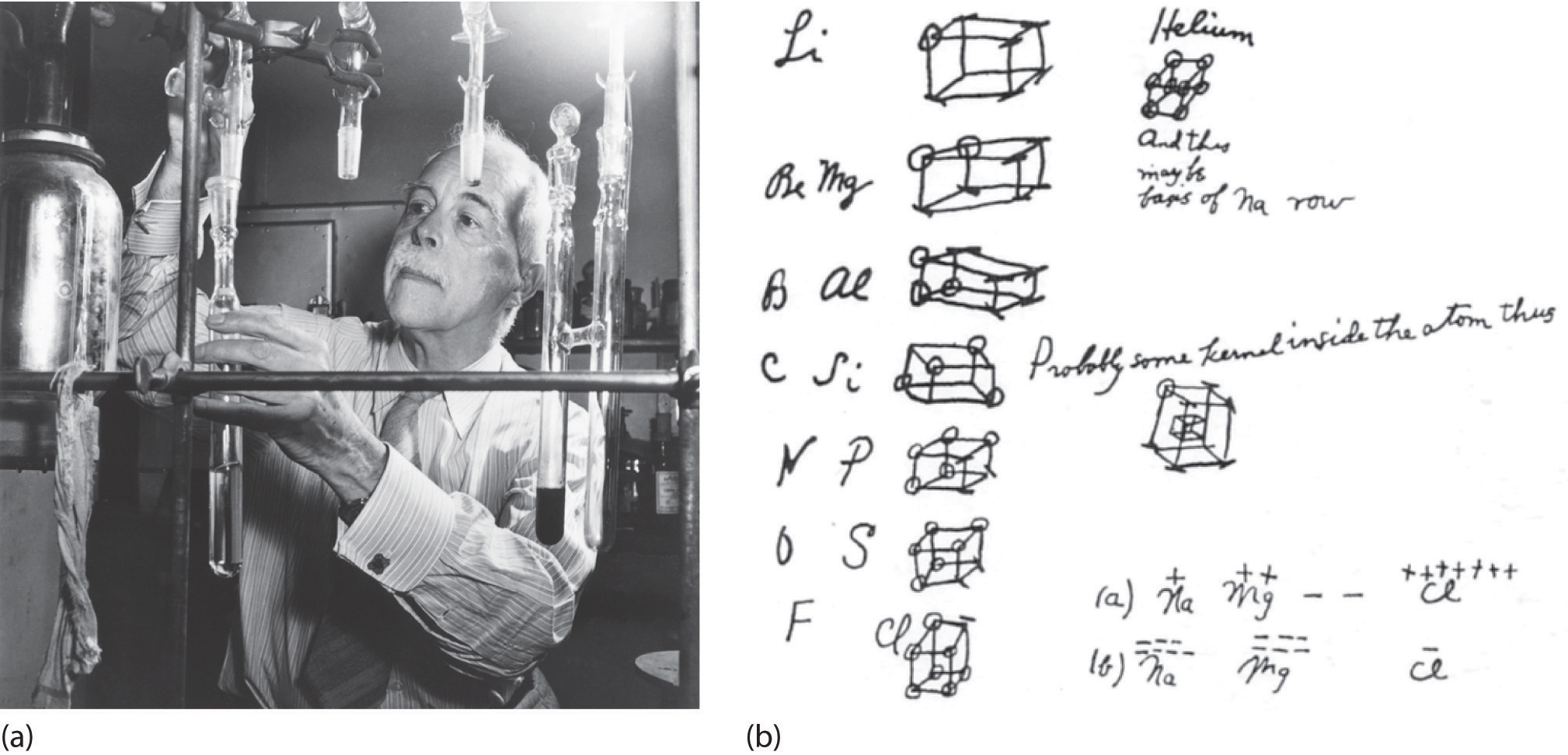
1 5 Octet Rule Ionic And Covalent Bonding Review Chemistry Libretexts

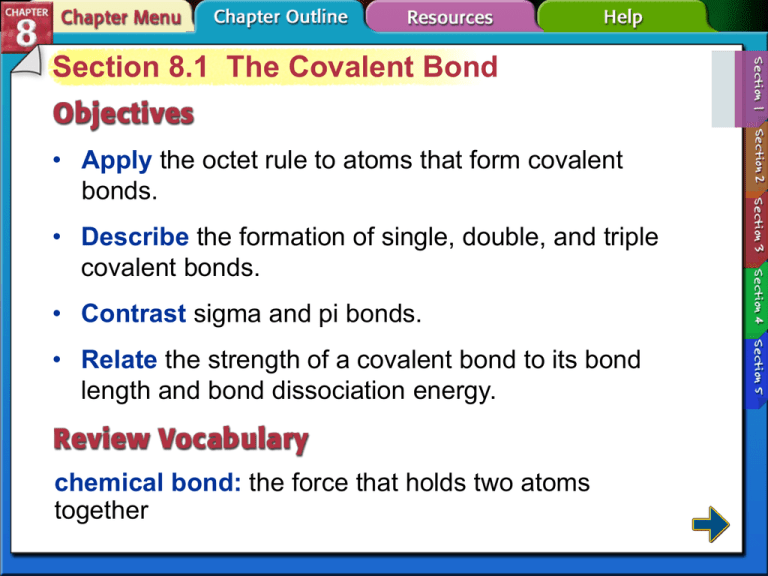
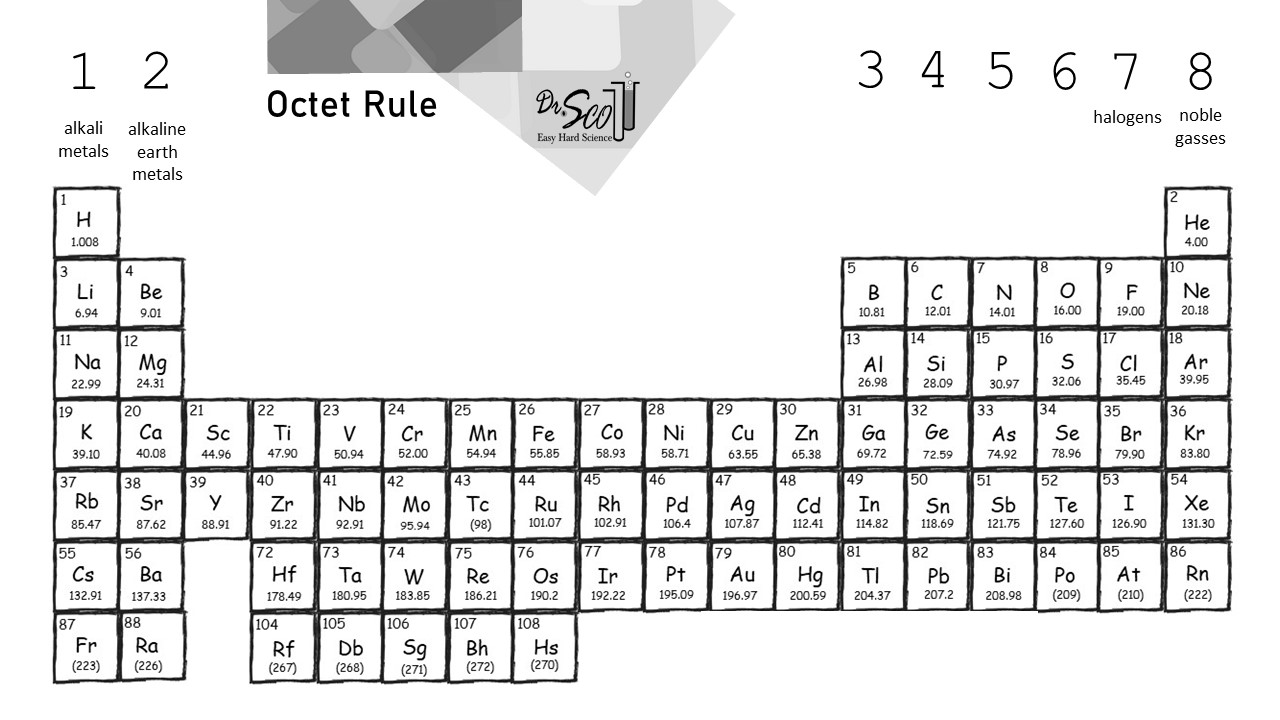

Comments
Post a Comment